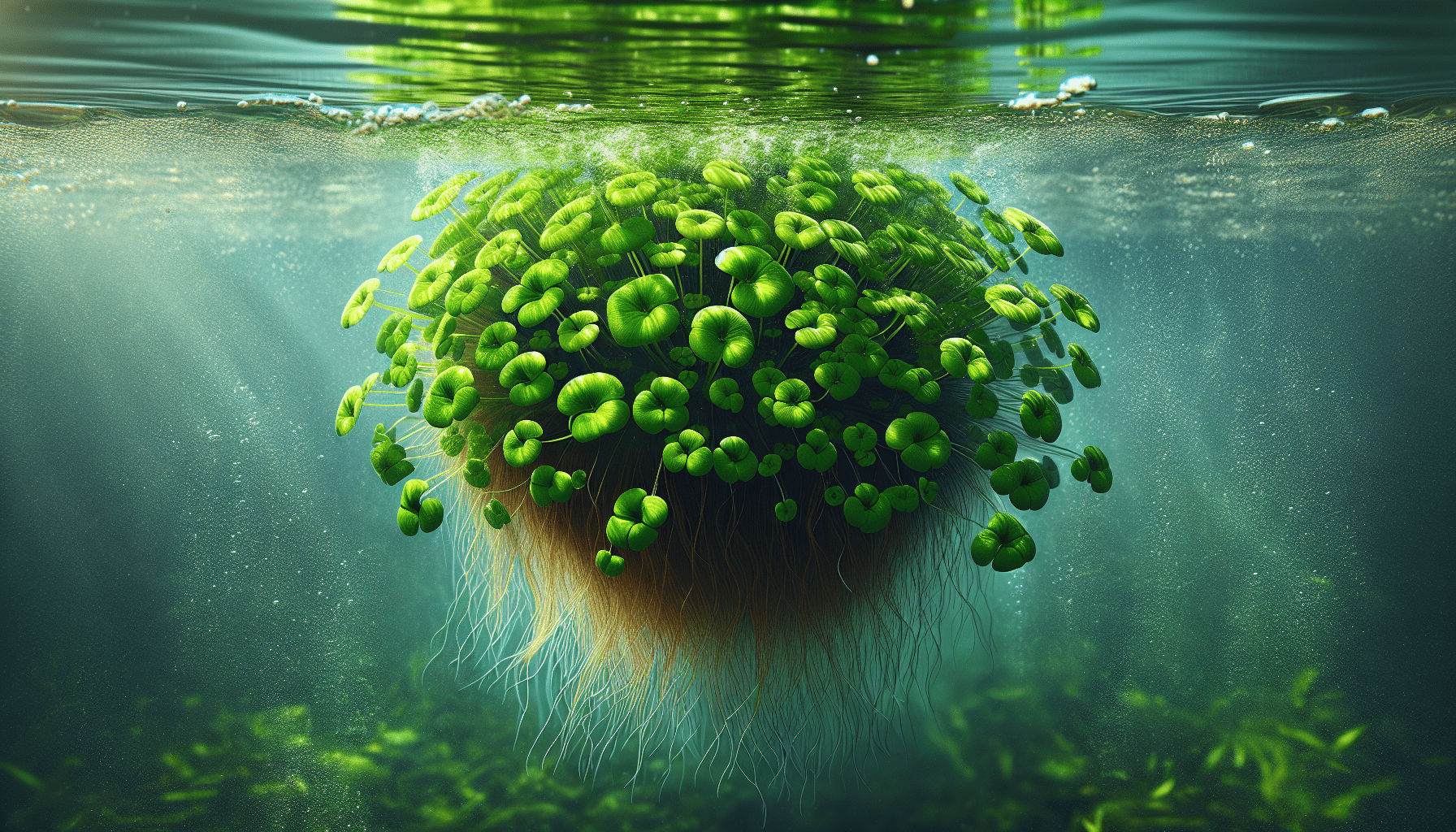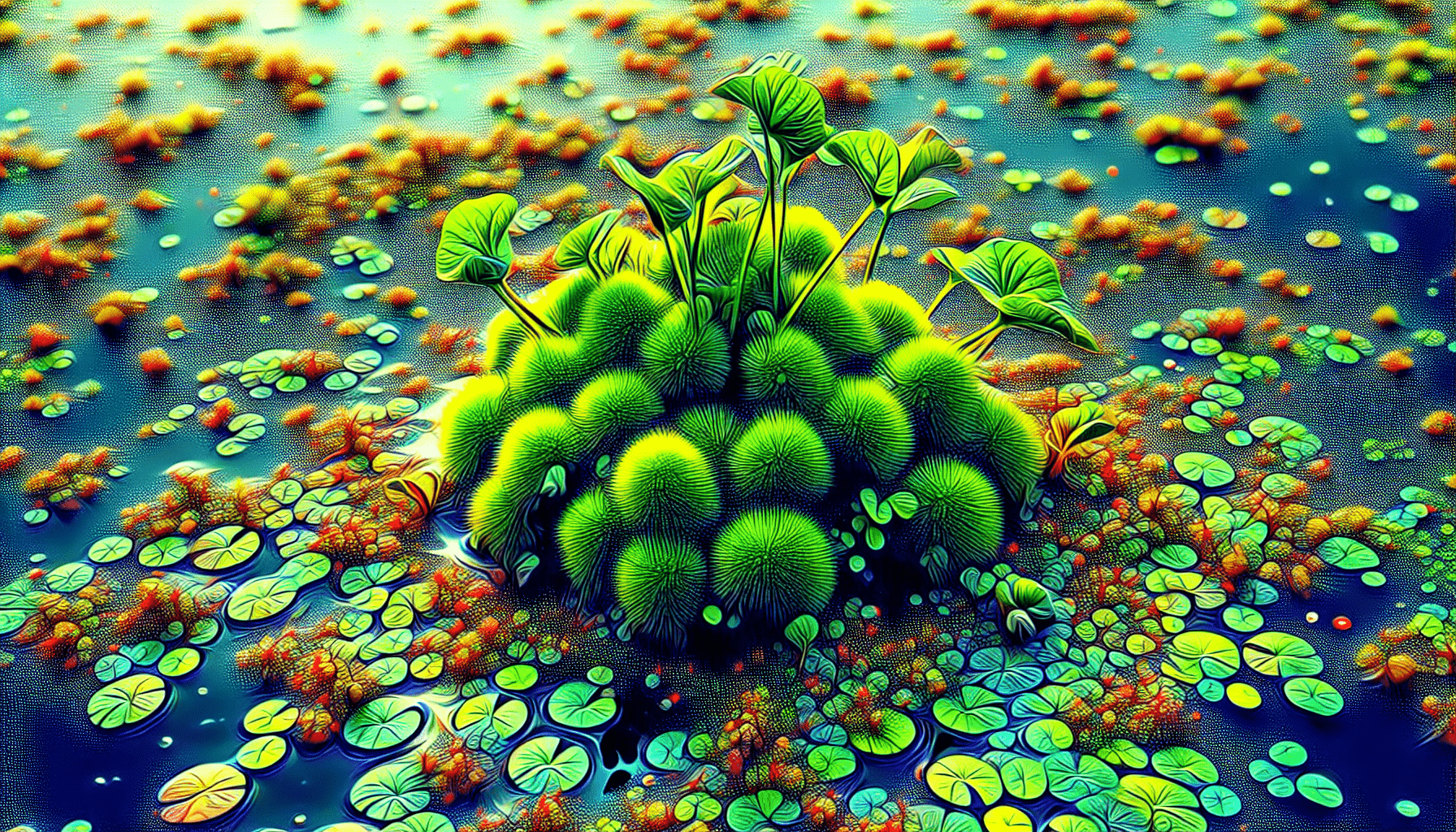Your exploration into the world of aquatic botany begins with an intriguing investigation into Lemna gibba, an often overlooked, but fascinating aquatic weed. This article endeavors to elucidate the characteristics, habitat, and impacts of Lemna gibba on the ecosystem, extending your understanding beyond the realms of common plants. As you navigate through these insightful details, you’ll find yourself enlightened in aspects of the aquatic landscape you may not have previously considered. Get ready to expand your knowledge and perception of the diverse and complex world of aquatic flora.

Overview of Lemna Gibba
Definition of Lemna Gibba
Lemna gibba, often referred to as the aquatic weed, is a species of duckweed that belongs to the Araceae family. As a free-floating aquatic macrophyte, it is often spotted on still or slow-moving bodies of water, forming a green blanket-like cover on the surface. This perennial plant is renowned for its potential in biotechnological applications and scientific research owing to its small size, rapid growth, and fascinating life cycle.
Scientific Classification from Kingdom to Species
In the hierarchy of biological classification, Lemna gibba falls under the Plantae kingdom. It is part of the Tracheophyta phylum, signifying its status as a vascular plant. From there, it further belongs to the class of Magnoliopsida, the order of Alismatales, and the family of Araceae. On a genus level, it belongs to Lemna with its specific epithet being Gibba.
Popular Names and Synonyms
Beyond its scientific name, Lemna gibba is popularly known by a variety of names. The most common one is ‘Duckweed,’ a tribute to the way ducks find it a source of nutrition. It’s also been referred to as ‘Fat Duckweed,’ hinting at the gibbous nature of its fronds. The synonyms for this species include Lemna purpusii, Lemna coromandeliana, and Lemna wollei, referring to variations of the plant recognized in different regional studies.
Description of Lemna Gibba
Physical Features
Lemna gibba is characterized by its small and elliptical thalli that often have a convex or swollen underside. It has one to three roots per frond, and its fronds are usually solitary. The plant has appendages, namely a white root and two anterior budding pouches.
Size and Color
As a microscopic plant, the size of the Lemna gibba ranges between 1.5 to 5.0 mm in length and 1.0 to 3.0 mm in width. Its roots, often single, can attain a length of up to 2.0 cm. The plant exhibits a light green to green coloration.
Leaf and Root Structure
Technically, Lemna gibba, as a species of duckweed, doesn’t have conventional leaves and stems. Instead, it has fronds, which act as leaves, and aid in photosynthesis. The root structure is simple, with one to three roots hanging down from each frond.
Habitat and Geographic Distribution
Types of Habitats Where Lemna Gibba Thrives
Lemna gibba thrives in a variety of aquatic habitats. It is commonly found on still or slow-moving water bodies such as ponds, lakes, swamps, marshes, and streams. The plant prefers eutrophic conditions, meaning that it flourishes in environments rich in nutrients.
Geographical Distribution Around the World
The species of Lemna gibba has a global distribution. It is native to nearly all continents, including North America, South America, Europe, Africa, Asia, and Australia. This versatility and adaptability to diverse climates make Lemna gibba one of the most widespread types of duckweed.

Life Cycle and Growth
Stages of Growth and Development
The life cycle of Lemna gibba initiates with seed germination, leading to the development of the first frond and root. The fronds then reproduce asexually, budding new daughter fronds that remain attached to the mother frond until mature enough to separate. Under optimal conditions, the duckweed population can double in a few days.
Seasonal Behaviors and Changes
Global seasons have a significant influence on the growth of Lemna gibba. During warmer periods, the plant proliferates rapidly. In colder conditions, it forms turions (overwintering buds) to endure the adverse conditions and resumes active growth when favorable conditions return.
Nutritional Requirements and Metabolism
Required Nutrients and Resources
Lemna gibba, as a photosynthetic organism, primarily needs light, carbon dioxide, water, and a range of mineral nutrients. Minerals such as nitrogen, phosphorous, potassium, calcium, and magnesium are vital for its growth.
Photosynthesis Process
The photosynthesis in Lemna gibba happens within the fronds that contain chlorophyll. These structures capture light energy and use it to convert carbon dioxide and water into glucose and oxygen.
Respiration Process
Respiration in Lemna gibba involves the breakdown of glucose in the presence of oxygen, producing carbon dioxide, water, and releasing energy. This process occurs continuously, enabling the plant to grow and multiply.
Interaction with Aquatic Ecosystems
Role in Aquatic Ecosystems
Lemna gibba plays a crucial role in aquatic ecosystems. It helps maintain the balance by providing food and cover to various fauna like insects, frogs, and ducks. It also plays a role in nutrient cycling by absorbing excess nutrients from the water.
Impact on Water Quality
While it can be beneficial in nutrient cycling, an overgrowth of Lemna gibba can lead to eutrophication, causing significant decreases in water quality. The dense mat of duckweed can block sunlight, reduce oxygen levels in the water, and alter the aquatic ecosystem’s balance.
Interactions with Other Aquatic Species
Lemna gibba is known to interact with various aquatic species. It often provides a habitat for a diverse range of micro and macroinvertebrates. While it serves as a food source for waterfowl and other herbivores, it can become a competitor for nutrients with other aquatic plants.
Environmental Impact and Control
Effects on Habitat and Biodiversity
Lemna gibba has a significant impact on the habitat and biodiversity of the waters it inhabits. Small amounts can be beneficial by absorbing excess nutrients and providing habitat for insects and amphibians. However, uncontrolled growth can lead to a decline in biodiversity by outcompeting native plants and negatively affecting water quality.
Methods for Control and Management
Management of Lemna gibba involves multiple strategies, including manual removal, shading, water level manipulation, and the use of herbicides. Biological control is another method where specific Lemna-feeding animals like grass carp or ducks are introduced into infested waters.
Global Initiatives for Lemna Gibba Control
Several global initiatives are underway to control and manage Lemna gibba due to its significant impact on freshwater ecosystems. These include research into effective control measures, development of legislative frameworks, and international collaborations for the sharing of resources and information.
Usage in Research and Science
Common Research Applications
Lemna gibba is commonly used in scientific research due to its small size, high growth rate, and unique characteristics. It is used as a model organism in environmental toxicity studies, investigations into plant biochemistry, genetic studies, and in the exploration of phytoremediation potentials.
Significant Studies and Discoveries
Notable studies using Lemna gibba include pioneering works in the field of phytoremediation and plant biochemistry. For example, research has revealed its capability to absorb heavy metals from water, enhancing insights into phytoremediation potential. Studies also provided pivotal insights into the plant’s unique asexual reproduction process.
Potential Industrial and Biotechnological Use
Bioremediation Applications
The ability of Lemna gibba to extract heavy metals from water and an affinity for nutrients in waste streams make it a suitable candidate for bioremediation applications. Using duckweed to clean polluted water bodies and wastewater streams is a growing area of interest.
Biofuel Potential
Lemna gibba’s fast growth rate, high protein content, and ability to thrive on nutrient-rich wastewater have also sparked interest in its potential as a source of biofuel. Harvested duckweed can be converted into bioethanol or biodiesel, offering a renewable and eco-friendly energy alternative.
Feed and Food Uses
Lemna gibba has been investigated as a potential source of animal feed due to its high nitrogen and protein content. Moreover, its edibility and nutritious profile have led to its consideration as potential human food supplement, particularly in regions affected by food insecurity.
Lemna Gibba in Popular Culture and History
Role in Mythologies and Folklore
While there are no specific mentions of Lemna gibba in mythology or folklore, duckweeds in general feature in various cultural contexts. In some regions, they are seen as symbols of fertility due to their rapid proliferation.
Famous Scientific References
Reflecting its significance in the scientific community, Lemna gibba has been highlighted in various texts and studies. From textbooks detailing plant biology to environmental studies addressing its potential in phytoremediation and biofuel production, this humble duckweed continues to captivate researchers and scientists across the globe.